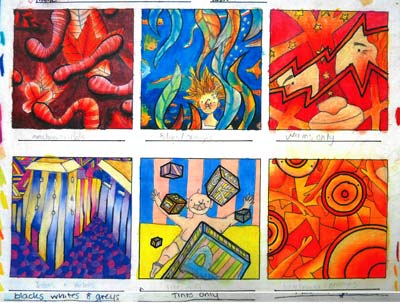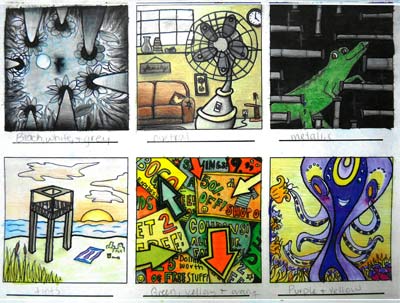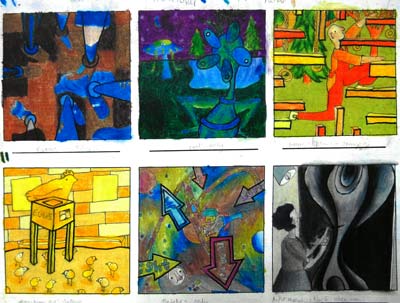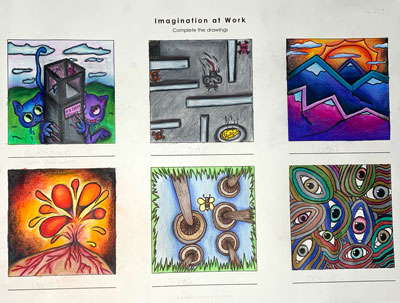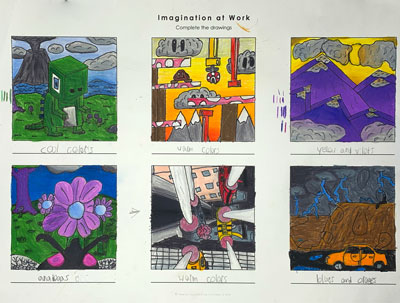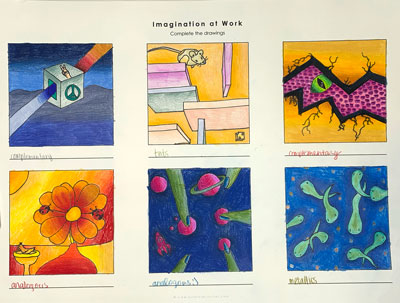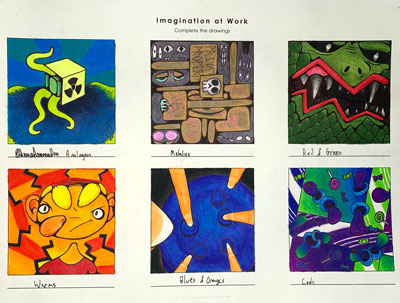Random or irregular shapes and lines can stimulate your imaginative forces.
Print out the worksheets. What do you think is hidden within each square?
Use existing shapes and lines to incorporate them into a realistic and recognizable object/setting/ place/person.
Start with sketching your ideas.
Spend at least 2 class periods to plan your compositions. Make a decision on color schemes. Refresh your memory if you are not sure...
WI State Standards:
- AA Cr11h
Plan: Formulate original concepts by practice, experimentation, and revision. (planning/experimentation) - AA Cr12h
Make: Create works of art that introduce students to media, care of tools, and basic craftsmanship skills.
(skills)
Learning targets:
- Abstract thinking
- Analyze and interpret created artwork
- Use planning (sketching) to develop a unique outcome
- Exercise and demonstrate use and mastery of the elements of art
- Create original objects of art
- Exercise and demonstrate use and mastery of colored pencil drawing and shading techniques
- Demonstrate understanding of Color Theory and Color schemes
- Demonstrate understanding of color values and chiaroscuro pattern.
in a nutshell
1. Standard AA Cr11h (planning/experimentation): Start with sketching. Analyze each line and shape. Look at them as a whole. Brainstorm for associations and sketh them out. Draw a thumbnail for each image. You can add color to your sketches if you wish to.
2. Standards AA Cr12h (skills): Then let's focus on each individual drawing.
Do a line drawing first using regular pencil, drawing lightly so that you can easily erase. Take your time with this step.
Then use a fine point marker or a black rollerball pan to outline added lines. Try to make them blend seamlessly into existing lines.
Next - coloring. Use colored pencils to create volume and space in each drawing.
3. AAPr10h (aesthetics/communication): Make sure each image is fully colored or shaded and all values are rendered. Each image is realistic and representational.


